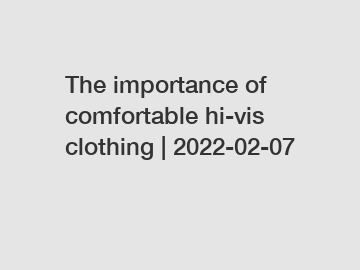Warp Knitting
Jul. 15, 2024
Warp Knitting
Warp knitting is the sequential formation and interlinking of loops in an axial direction on a lateral array of needles with at least one separate thread being supplied to each needle. The loops are joined together in a width-wise direction by moving the threads back and forth between adjacent needles.
Warp knitting is a specialized textile production technique that has been in use for centuries. It differs from traditional weft knitting in that it involves multiple yarns running vertically (warp) to create a fabric with interconnected loops. This article provides an introduction to warp knitting, tracing its historical roots and explaining its significance in modern textile manufacturing.
Warp knitting represents the fastest method of producing fabric from yarns. Warp knitting differs from weft knitting in that each needle loops its own thread. The needles produce parallel rows of loops simultaneously that are interlocked in a zigzag pattern. The fabric is produced in sheet or flat form using one or more sets of warp yarns. The yarns are fed from warp beams to a row of needles extending across the width of the machine. Two common types of warp knitting machines are the Tricot and Raschel machines. Raschel machines are useful because they can process all yarn types in all forms (filament, staple, combed, carded, etc.). Warp knitting can also be used to make pile fabrics often used for upholstery.
Warp Knit Structure
Warp knitting is defined as a stitch forming process in which the yarns are supplied to the knitting zone parallel to the selvedge of the fabric, i.e. in the direction of the wales. In warp knitting, every knitting needle is supplied with at least one separate yarn. In order to connect the stitches to form a fabric, the yarns are deflected laterally between the needles. In this manner, a knitting needle often draws the new yarn loop through the knitted loop formed by another end of the yarn in the previous knitting cycle.
A warp knitted structure is made up of two parts. The first is the stitch itself, which is formed by wrapping the yarn around the needle and drawing it through the previously knitted loop. This wrapping of the yarn is called an overlap. The diagram shows the path taken by the eyelet of one yarn guide traveling through the needle line, making a lateral overlap (shog) and making a return swing. This movement wraps the yarn around the needle ready for the knock-over displacement.
The second part of stitch formation is the length of yarn linking together the stitches and this is termed the underlap, which is formed by the lateral movement of the yarns across the needles.
The length of the under lap is defined in terms of needle spaces. The longer the underlap, the more it lies at right angles to the fabric length axis. The longer the underlap for a given warp the greater the increase in lateral fabric stability, conversely a shorter under lap reduces the width-wise stability and strength and increases the lengthways stability of the fabric.
The length of the underlap also influences the fabric weight. When knitting with a longer underlap, more yarn has to be supplied to the knitting needles. The underlap crosses and covers more wales on its way, with the result that the fabric becomes heavier, thicker and denser. Since the underlap is connected to the root of the stitch, it causes a lateral displacement in the root of the stitch due to the warp tension. The reciprocating movements of the yarn, therefore, cause the stitch of each knitted course to incline in the same direction, alternately to the left and to the right.
In order to control both the lateral and longitudinal properties, as well as to produce an improved fabric appearance with erect loops, the second set of yarns is usually employed. The second set is usually moved in the opposite direction to the first in order to help balance the lateral forces on the needles. The length of the underlap need not necessarily be the same for both sets of yarns.
Warp Knitting Machines
Warp knitting machines are at the heart of the warp knitting process. This section explores different machine configurations, the role of guide bars in controlling yarn movement, and the modernization and automation of warp knitting technology.
Types of Warp Knitting
Warp knitting encompasses various techniques, each with its own characteristics and applications. We'll delve into the most common types of warp knitting, including tricot, raschel, Milanese, crochet, Rachel, and others, highlighting their distinct features.
Warp Knitting Processes
Understanding the warp knitting process is essential for appreciating the complexity and precision involved. We'll discuss warp setting and warping, stitch formation, the crucial role of guide bars in pattern creation, and finishing processes that enhance the final fabric's quality.
Characteristics of Warp-Knitted Fabrics
Warp-knitted fabrics possess unique characteristics that make them desirable for specific applications. We'll explore their stability and strength, versatility, textural variety, and elasticity, showcasing the advantages that warp knitting offers.
Applications of Warp Knitted Fabrics
The versatility of warp-knitted textiles makes them suitable for a wide range of applications. We'll examine their use in apparel and lingerie, technical textiles for industrial purposes, home furnishings, automotive interiors, sports and outdoor gear, and medical textiles.
Advantages and Disadvantages
Warp knitting offers several advantages, such as high productivity and fabric stability. However, it also has limitations and challenges. We'll provide a balanced overview of both the advantages and disadvantages of warp knitting.
Innovations in Warp Knitting
The textile industry is continually evolving, and warp knitting is no exception. This section discusses recent innovations in warp knitting, including sustainable practices, the development of smart and functional textiles, and the possibilities of customization and 3D knitting.
Conclusion
In conclusion, warp knitting remains a vital and evolving technique in the world of textiles. Its unique characteristics and versatility make it a valuable tool for various industries. As technology advances and sustainability becomes increasingly important, warp knitting is poised to play an even more significant role in the future of technical textiles and fabric production.
Everything You Need To Know About Warp Knitting
Everything You Need To Know About Warp Knitting
Everything You Need To Know About Warp Knitting
One of the biggest markets in the world is the textile market. And it has every right to be, considering that proper clothing is one of the fundamental requirements a human has to live a comfortable life.
The market is filled with various fabrics, ranging from basic ones such as cotton, wool, and jute, to various artificial ones like rayon, nylons, kevlar, and many more.
To make the best use of the market, it is necessary to know how fabrics are manufactured to cater to the vast demands of the market. It is essential to look at all the methods to utilize every resource to its full potential.
Let us begin by looking at methods to mass-produce cloth, primarily through the means of machines, such as looms.
One of the most used ways of manufacturing fabric today is warp knitting.
Warp knitting is the process of knitting fabric simultaneously in parallel columns through a zigzag pattern of interlocking threads to create material rather than the more familiar way of knitting threads a single row at a time. This method is known as weft knitting.
Warp knitting is usually done with the help of a machine. This is because many columns are formed collectively, a large number of yarns need to be handled simultaneously.
As such a feat would be challenging to do by hand, the help of a machine is taken to fulfill all such requirements.
Origins
The warp knitting technique is believed to have been invented in .
But after 20 long years of brainstorming, the first primary machine was created to carry out the task. Since then, various innovations and inventions such as the point bar and bobbin have resulted in the warp knitting machines we see today.
Current Status
Warp knitting is one of the most widespread forms of creating textiles and fibers. It has many applications in the industry, and the machine involved in warp knitting is a common sight to see nowadays.
For more information, please visit Qicai.
Related links:Unlocking the Magic of CVC Textiles
Flame-resistant fabric: Is it truly safe?
Ultimate Guide to CVC Cloth: Everything You Need
Polyester Fire Resistant: Is Fashion Embracing Safety?
The Ultimate Guide to Tetron Rayon Fabric
Polyester Fire Retardant Fabric: Answers to Your Top Questions
1. How to buy 100% cotton fabric online?
Warp knitting is the most used way of creating tricot and raschel fibers extensively used in making various garments.
A few significant applications of the technique can be seen in sportswear, cloth in shoes, thin netting for mosquitoes, tulle fabrics, fabrics involved in advertisements, and laminations.
The fabric created by warp knitting has also proven to have industrial applications such as reinforcing concrete and making bio textiles.
Biotextiles have been formed, such as those that provide cardiac support, proven by animal research to decrease heart condition symptoms.
The Structure
In warp knitting, the yarn is supplied to the knitting parallel to the direction in which the fabric is being knitted, also known as the direction of the wales.
Each needle in the point bar is supplied with its own separated yarn, and to form the fabric and interlock the threads and create the zigzag pattern, the yarns are deflected laterally between the needles.
Warp knitting structure is made up of two main parts.
The first part is the stitch, which involves wrapping the yarn around the needle and pulling it through a previously formed loop. This type of wrapping the yarn is known as an overlap. It does the job of prepping the yarn for the knock-over displacement to the new needle.
The second part of the structure involves linking the yarns together. This is known as an underlap.
The length of the underlap is an essential factor of warp knitting. If the underlap is long, it increases the width-wise stability and strength. On the other hand, a shorter underlap reduces the lateral strength and stability of the fabric but increases its strength along the axial length.
The underlap also influences the weight of the fabric. A longer underlap means more yarn to be used in interlocking. It will be covering more wales with each stitch. Hence, it increases the overall weight and has a thicker, denser fabric quality.
Types
There are various kinds of cloth created through warp knitting. It would be wise to have an overview of each of them.
Raschel Knit
In , the principles of the circular loom were combined with the principles of warp knitting. Combining these principles gave birth to the Raschel machines, which are used to create most of the modern-day machine-made lace.
Raschel knits are not very stretchy, resulting in very bulky fabrics. These are primarily used for creating the inner linings of coats, jackets, dresses, etc. Such materials can also be made out of different types of yarns to create designs as well.
Raschel fabrics also have a lot of variety in their density and compactness.
Stitch-bonding
It is a unique king of warp knitting. It is the most preferred method for producing composite materials and technical textiles, primarily due to its very high efficiency. This method consists of multiple layers of fabrics and threads.
These layers are joined to each other through a knitting thread. This creates a layered structure called a multi-ply.
Fabrics created by stitch-bonding have applications in aviation and wind energy generation. Reinforcing concrete is also an avenue that is being explored as to its use.
Since its offers advantages such as increased productivity and scope for creating complex textiles, it can be used for producing fabrics that use sensitive materials such as carbon and glass with almost little to no setbacks.
Tricot
A ubiquitous cloth, it is a combination of fine lengthwise ribs on one side and crosswise ribs on the other. Its properties include having a drape-like, soft texture with slight lengthwise stretch at the cost of zero crosswise stretches.
Because of such properties, this fabric is used in the production of delicate garments.
Needle Shift
A needle shift is when the outer warp layers are fixed in one procedure by adding a change in the needle bar during sewing; unlimited options for stitch-bonding arrangement and patterns are created.
Milanese Knit
The Milanese knit is similar to tricot but is more robust, stable, smooth, and ultimately expensive. This knit involves two sets of threads knitted diagonally. This results in the final fabric possessing a fine vertical rib on one side and a diagonal structure on the opposite.
Such features help the fabric be lighter, smooth, and resistant to water. Sadly, this type of fabric is not in use any longer.
Advantages
The process of creating textiles through warp knitting has various advantages. Those advantages are:
- Warp knitted fabrics have a considerable working width.
- Warp knitting is a technique that allows us to create a wide range of materials. Hence, it is helpful for projects where multiple kinds of fabrics are needed to be produced simultaneously.
- The stress on yarn is decreased. This allows for brittle material to be used as yarn, such as aramid, carbon, or glass.
- As warp knitting builds the cloth in adjacent columns, it allows for the creation of three-dimensional structures.
- Overall, warp knitting has a higher efficiency than weaving.
New Developments
Just like all technological fields, warp knitting is also being continuously improved by engineers all across the globe.
There have been a few straightforward advancements, such as connecting machines to the internet to provide remote access to users and operate machines online. There are also new softwares to improve the ease of usability of machines and data management facilities.
Besides that, innovation is also being introduced in the field, such as a supervising thread system that scans and monitors threads as they are being knit. Protechna is a thread stabilization system for the easy management of loose threads and taking care of roll-ups.
Conclusion
Warp knitting is a technique that withstood the test of time and has prevailed for centuries. The method has its fair share of advantages and applications across many fields.
It is a volatile method of producing fabric which gives an advantage when using specific materials. It is also more efficient than most conventional ways of making fabrics. There is also no shortage of designs that can be formed by using this method of creating fabric.
Thus, anyone looking to begin or boost their journey in the textile market will surely benefit by understanding and employing warp knitting to fulfill all of their fabric needs.
Whether you want to build your clothing site or improve your existing one, you can practically get started with Fashinza and start sourcing clothes on your own.
Right from helping you design your very own clothes to providing you adequate resources for helping you scale your brand, you can trust Fashinza with the same and grow your very own brand.
Contact us to discuss your requirements of warp knit fabric manufacturers. Our experienced sales team can help you identify the options that best suit your needs.
Key Questions to Ask When Ordering How to Spell Hi Vis
How Does high-quality blue fabric Work?
Which Disposable FR Coverall Brand Is The Best?
Fire Retardant Coated Fabrics: Comparing Effectiveness and Durability
4 Tips for Selecting Cotton Brocade Fire Retardant Fabric
An Expert Answers Your Burning Questions on Flame ...
How to Choose 350gsm Fluorescent Yellow Fabric? A Comprehensive Guide for Fabric Enthusiasts
183
0
0
Related Articles
-
179
0
0
-
Redefining Fashion: Are Disposable FR Coveralls Sustainable?
Redefining Fashion: Are Disposable FR Coveralls Sustainable?
169
0
0
-
194
0
0
-
94
0
0
-
37
0
0
-
29
0
0
-
30
0
0
-
14
0
0





Comments
All Comments (0)